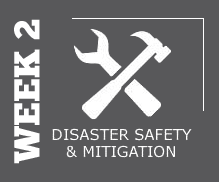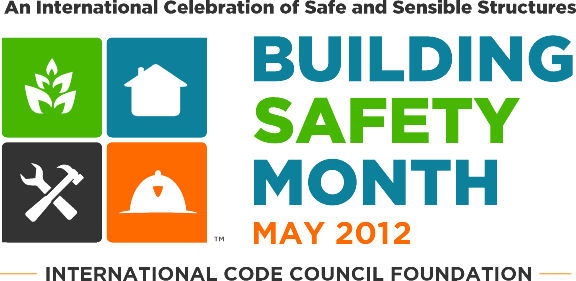 As mentioned in last week’s Safety Sunday article the ICC (International Code Council) which is promoting this year’s International Building Safety month broke it into 4 distinct topics. This week’s topic is focused on Disaster Safety & Mitigation which I highly recommend you check out as it is quite extensive. Below is a copy of their top ten tips, with links to resources on the HTRC & elsewhere.
As mentioned in last week’s Safety Sunday article the ICC (International Code Council) which is promoting this year’s International Building Safety month broke it into 4 distinct topics. This week’s topic is focused on Disaster Safety & Mitigation which I highly recommend you check out as it is quite extensive. Below is a copy of their top ten tips, with links to resources on the HTRC & elsewhere.
10 important tips to remember for disaster safety and mitigation:
- Develop a family action plan and share with everyone in your family, so you will know where to go if an evacuation is called. Review at least two exit routes from your home or neighborhood to a designated meeting place for your family. Plan ahead for your pets (see number 6) as many shelters will not accept them.
- Create a disaster supply kit that will allow you to remain in your home after a disaster or for use after evacuating to a safer location. Be sure the necessities in your kit are fresh and restored every six months.
- Stay tuned to radio, TV and NOAA Weather Radio for official updates and critical life-saving weather information. Remember, reception is usually best if placed near a window.
- Flooded roads could have significant damage hidden by floodwaters. Never drive through floodwaters or on flooded roads. Do not attempt to cross a flowing stream. It takes only six inches of fast flowing water to sweep you off your feet and two feet of water to move an SUV-sized vehicle.
- If you live in a high wind or hurricane prone area and do not have tested and code approved shutters for protection from windborne debris, temporarily protect your doors and windows by mounting exterior grade, 5/8″ minimum thickness plywood and fastening it into place. Visit www.flash.org for detailed instructions on how to use plywood for emergency board up.
- Secure lawn furniture and any other loose outdoor items that can become windborne and can cause injury or damage during storms with high winds. Don’t forget trash cans, grills, toys and potted plants.
- Consider building or retrofitting to create a tornado safe room in your home. Follow ICC/NSSA 500 Standard for detailed construction information and to ensure you achieve the highest level of protection for your family.
- Use Surge Protective Devices (SPD) in your home to protect electronic appliances from all but the most severe electrical surges or direct strikes. The devices should be installed to afford the highest level of protection.
- In wildfire prone areas, remove fine (dead grass, leaves, etc.) and coarse fuels (dead twigs, branches, etc.) within 30 feet of a building to create a survivable space in case of wildfire. Be sure to remove dry leaf and pine litter from roofs, rain gutters, decks and walkways. Follow ICC’s International Wildland-Urban Interface Code® for detailed requirements.
- Prevent Frozen Pipes: Before a winter storm, insulate all exposed water pipes outside the home. (The remainder is stricken due to bad advice – the only time dripping should occur is if you have been too lazy to fix the issues before hand or he11 has frozen over)

